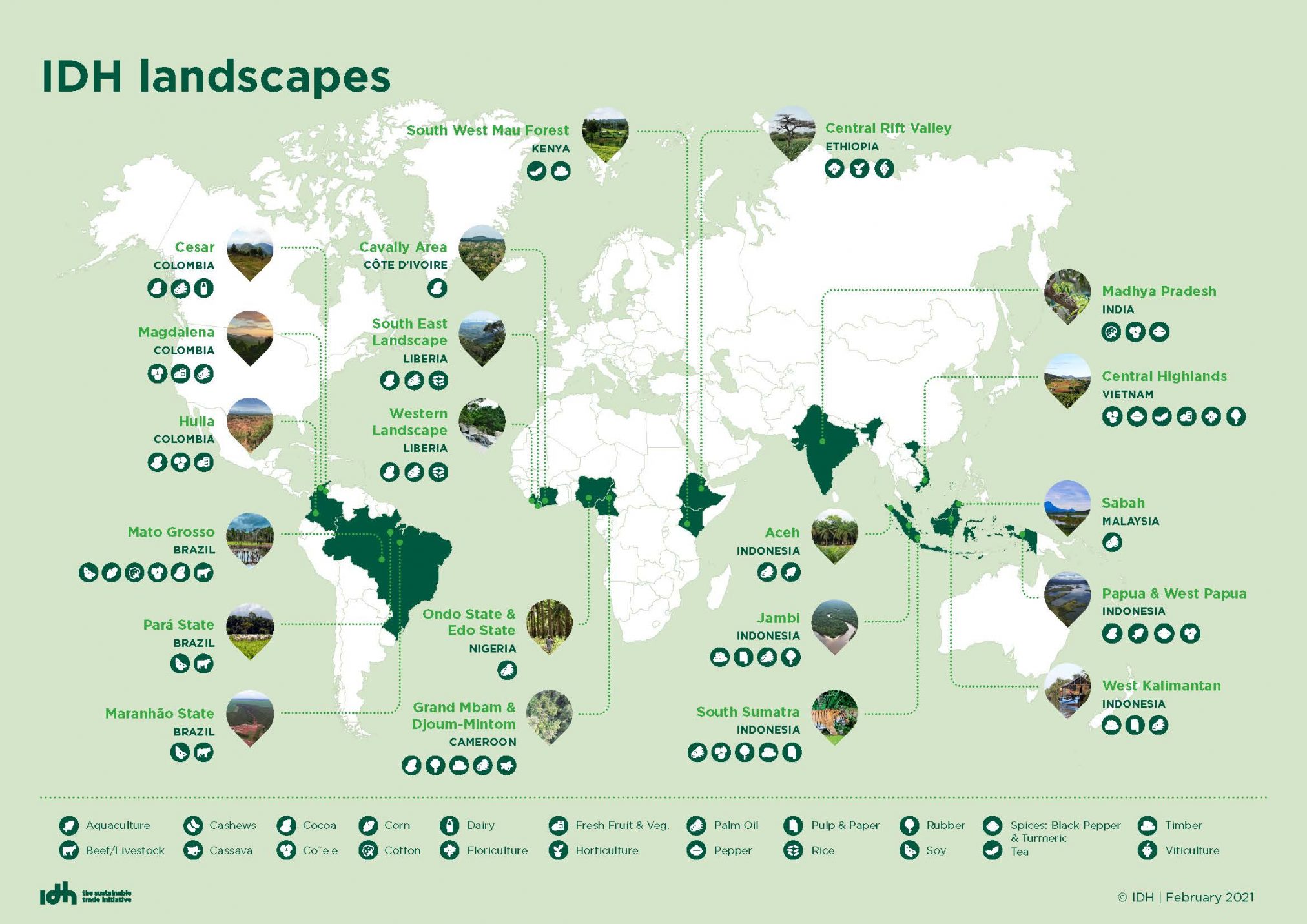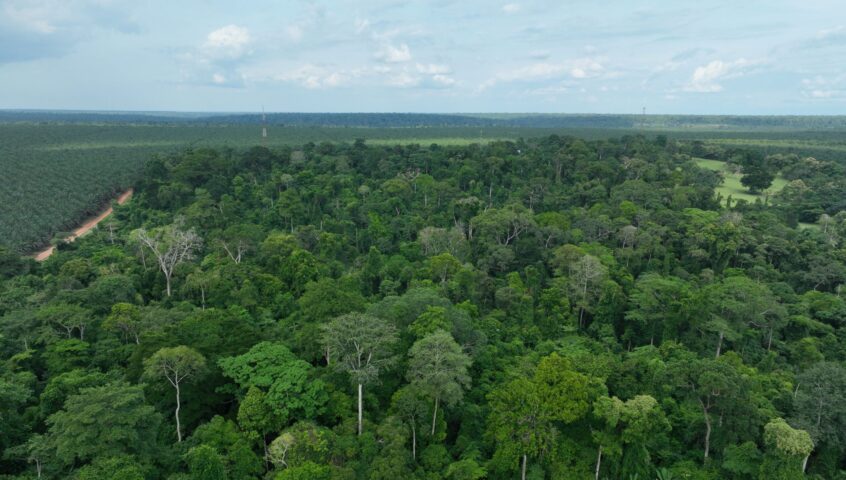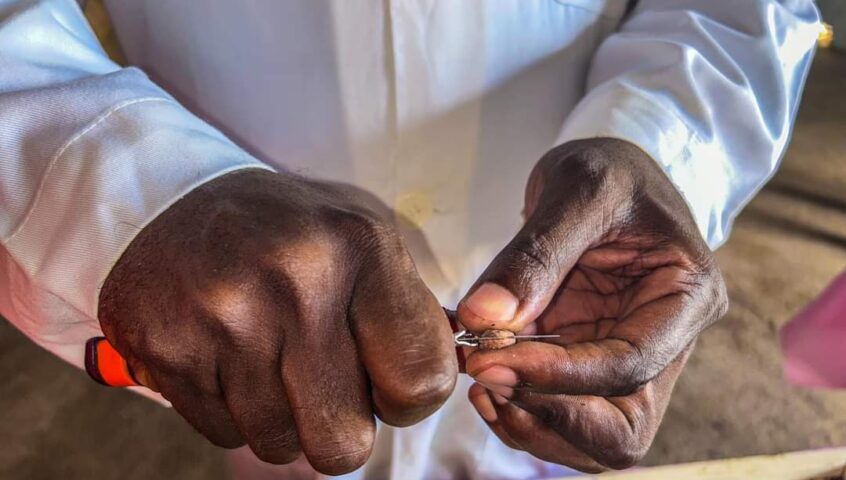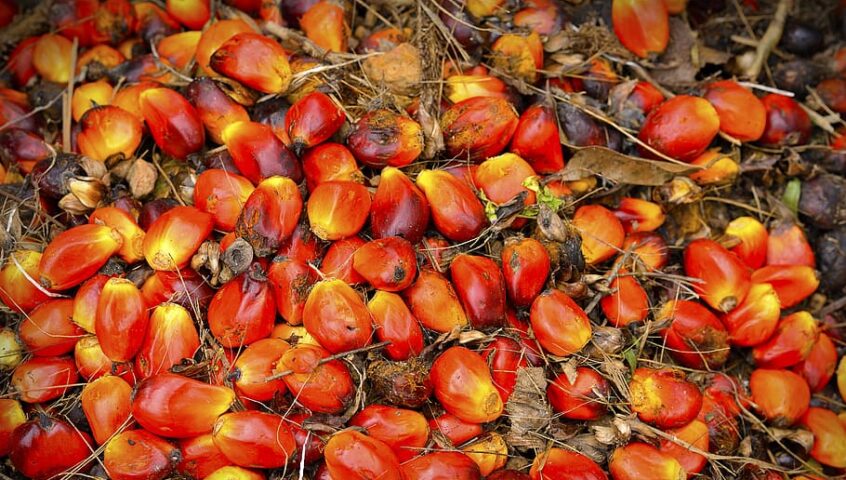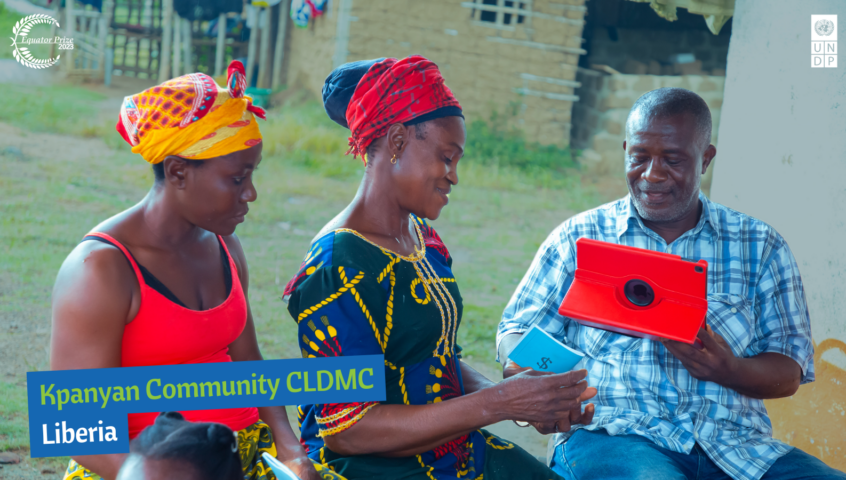Land users in a region often rely on the same land, water and forest resources. Decisions made to increase production in a single sector without effective coordination with other users are likely to have negative impacts on the overall availability of resources. With a growing pressure on natural resources, there is a real danger of depletion and deforestation. In order to mitigate this risk, IDH has developed a three-pronged approach, Production, Protection & Inclusion approach (PPI approach), to invest in sustainable landscape management. Download our Landscape Approaches Brochure to find out more.

Production
Increasing the productivity of farmers in a sustainable way, so they yield more from the same land. This, combined with a diversification of farmers’ sources of income, improves their livelihoods and reduces the incentive to convert native forests into arable land. This is the first step to the establishment of ‘verified sourcing areas’ where agriculture production is de-linked from deforestation, therefore supporting companies’ commitments to sourcing deforestation-free products.
Protection
Putting in place measures to conserve forests and other natural resources. Measures include supporting local governments enforce forest protection laws, implementing deforestation monitoring systems, capacity building projects to communities, and providing conditional loans or tax reductions to farmers in exchange for protection.
Inclusion
Improving livelihoods of farmers and forest-dependent communities, and thereby reducing their incentives to encroach forests. This is done, among other things, by diversifying income sources and creating local ownership through participatory land use planning.
How PPI approach works
PPI approach involves working both at the national or global level as well as on the ground. IDH does this through a number of key interventions: green growth planning, PPI compacts, landscape governance and creating linkages to market. Read more about each of these interventions below or download our Landscape Approaches Brochure for case study examples.
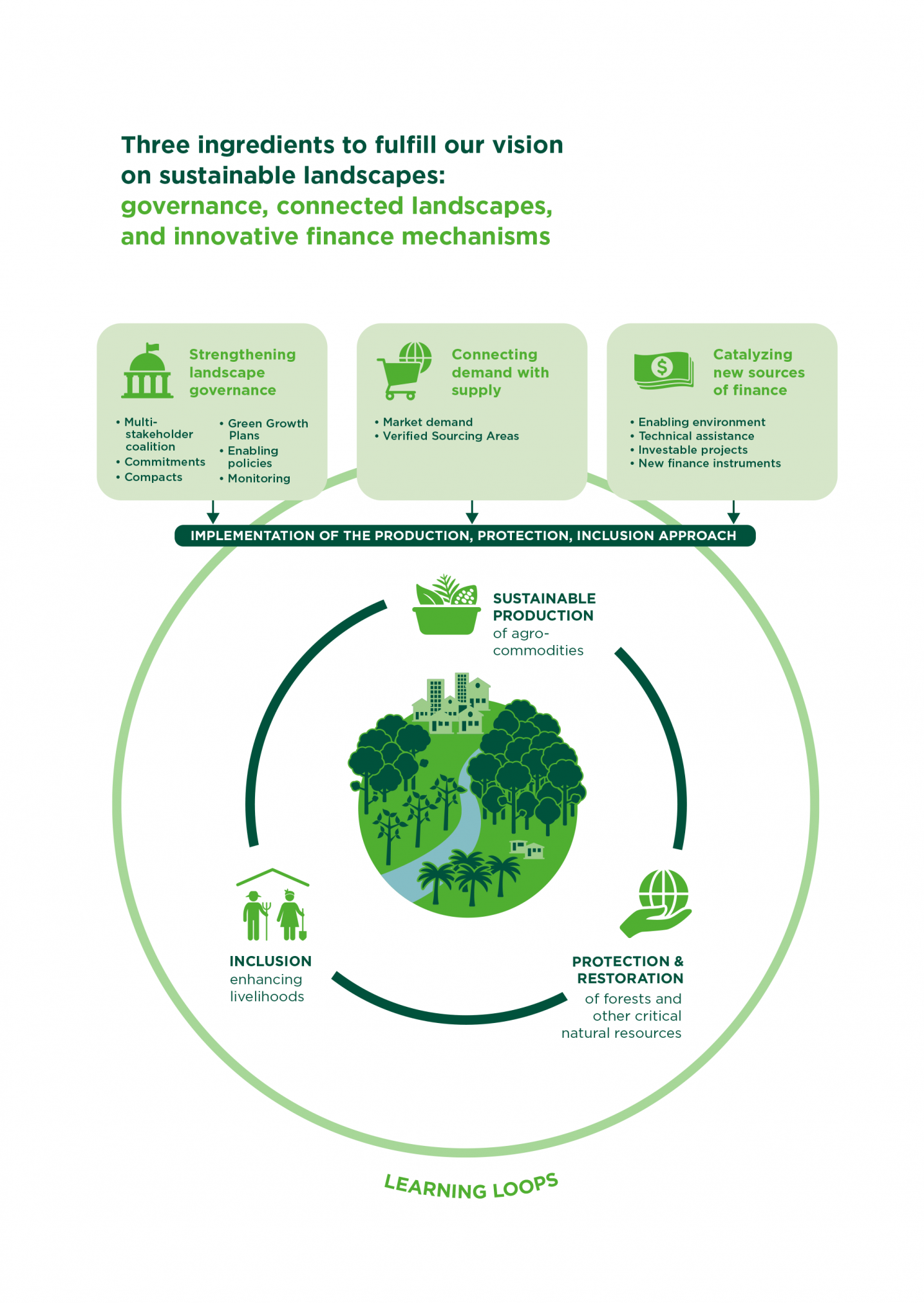
Publications
| Title | Type | Year | Regions | TAF |
|---|---|---|---|---|
| European Soy Monitor 2021 | Report | 2023 | Europe | Landscapes Program |
| Initiative for Sustainable Landscapes (ISLA) Annual Report 2022 | Report | 2023 | Africa, Asia, Latin American | Landscapes Program |
| JBS and IDH ramp up Brazilian Sustainable Production of Calves traceability partnership to register 1 million animals by 2025 | Other publications | 2022 | Latin American | - |
| European Soy Monitor Report | Report | 2022 | Europe | Landscapes Program |
| LDN TAF 2nd Learning Brief on Sustainable Land Management | Report | 2022 | Africa, Asia, Europe, Latin American | LDN |
| Learning from Landscapes | Report | 2022 | Africa, Asia, Europe, Latin American | Landscapes Program |
No publications found.

